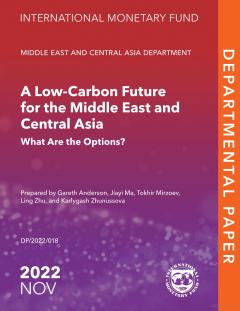
Nearly all countries in the Middle East and Central Asia have pledged to contain greenhouse gas (GHG) emissions as part of the Paris Agreement. Collectively, these commitments envisage reducing annual emissions in 2030 by an estimated 13-21% depending on the availability of external support, relative to the current trend of their rapid growth.
The purpose of this paper is to identify the menu of fiscal policy options that would allow the region to fulfil its emissions reduction commitment. Specifically, it examines and estimates the trade-off between two broad categories of fiscal policies: public investments, for example in renewable sources of energy, and measures that raise the effective price of fossil fuels.
Such a dichotomy captures the key medium-term macroeconomic and long-term intergenerational trade-offs that are arguably the most pertinent for the countries in the Middle East and Central Asia, where governments are likely to play a leading role in the low-carbon transition.
